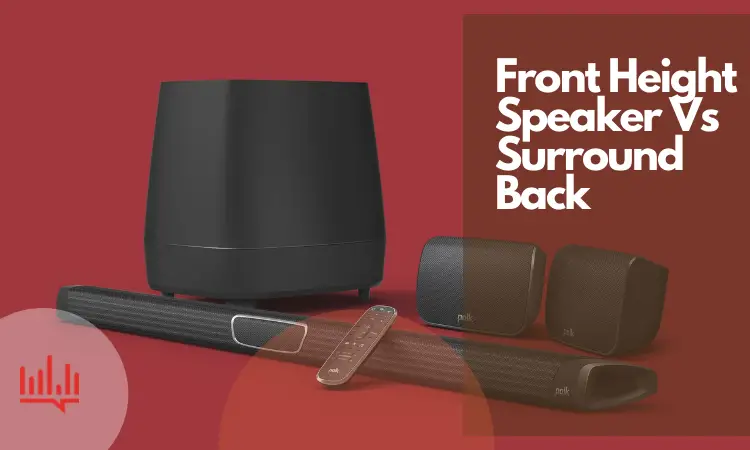With the advancement of technology, audio outputs are always evolving. Outputs like raw and PCM (Pulse-Code Modulation) give an audio dynamic range. But both these have their differences.
So, which one is better raw or PCM for digital output?
Raw audio output is supported by CD, DVD, Blu-ray, etc. media players. However, PCM can work for high-end surround sound systems. Albeit, raw is converted by the player but PCM is converted by the receiver. Nevertheless, raw needs to be wire connected. Whereas, PCM can also be wirelessly connected.
Having a proper grasp on this topic can help you fully differentiate the two digital output methods. To learn what each audio output does, you need to dive deeper.
So, let’s get started!
Quick Comparison
Raw and PCM are both used in almost every digital media player. Yet, you need to know what each audio output does.
So, what is the raw digital audio output? Basically, it means giving the uncompressed or original audio output. Music producers use this file format to record a song.
Source: lifewire.com
Now, what is PCM digital audio output? It means the conventional way of encoding a digital signal to an analog signal. The file is uncompressed while providing the output.
Nevertheless, there are other digital audio output options available. Such as Dolby and Dolby DTS. PCM, DTS, and Dolby differences are also worth considering.
With that out of the way, raw and PCM differences are also many. So, let’s get started with the basic differences first.
| Differentiating Factors | Raw | PCM |
| Compatibility | CD, DVD, Blu-ray | High-end players with surround sound system |
| Audio Conversion | Analog to digital and vice-versa | Encoded for surround sound system |
| Supported By | Digital and analog players | Only digital players |
| Decoding | Audio files are decoded by the player | Audio files are decoded by the receiver |
| Connectivity | Wired | Wired and Wireless |
| Required Bandwidth | Higher bandwidth than PCM | Flexible |
| Secondary Audio Support | High-resolution support | Limited |
| Optical Support | Limited | Fully supported |
| Coaxial Support | Limited | Fully supported |
You might get confused seeing this quick review. Well, don’t sweat. I will give an in-depth comparison in the next section.

So, let’s jump to the in-depth comparison.
In-Depth Comparison
In this section, I will debrief each output. Things might get tricky but don’t worry. I will put things in a simple perspective.
If you have a DIY speaker, it might not work with a certain audio type. So, knowing the differences between DIY speakers and store-bought speakers are important.
Without waiting any longer, let’s start the comparison.
Compatibility
Remember using a DVD player when you were a child? That used to be our favorite device back then as it let us watch our favorite shows. But, how do the players deliver audio?
Well to answer that they used raw audio output. Even now, most media players like blu-ray players use the same audio format. Because it can deliver the original audio without any compromise.
Source: myprius.co.
On the other hand, PCM audio output is supported by most surround sound systems. Because the receivers are strong enough for playing the encoded audio type.
A lot of mp3 players that are later released have both output features included. Some of the best mp3 players that support both audio outputs are given below:
| Image | Player Model | Price |
|---|---|---|
 | Aiworth Portable Digital Lossless Music MP3 Player | Check Current Price |
 | SanDisk 8GB Clip Jam MP3 Player | Check Current Price |
 | TIMMKOO 4.0" Full Touch Screen Mp3 Mp4 Player | Check Current Price |
These mp3 players can do a lot more than just play mp3s. With them, you get to enjoy other useful features!
Summary: Raw audio output is supported by most media players. PCM audio output is supported by surround sound systems.
Conversion
The conversion type of each audio output matters. That way you can figure out whether the audio file gets compromised or not.
Raw output is mainly the uncompressed data that you are using. The player itself decodes the audio file and sends it to the receiver. That way the original audio quality remains the same.
It’s also helpful to learn to reduce lufs.
However, PCM output delivers the compressed data to the receiver. The receiver then decodes the audio file to provide the audio output.
Summary: Raw output is decoded by the media players. Whereas PCM output is decoded by the receiver.
Bandwidth Required
The bandwidth of audio output is the audio signal it requires. More the bandwidth it needs, the more latency, jitter, and other problems can arise.
Now, the raw digital audio output requires high bandwidth. Because the player sends the decoded file to the receiver. The file is larger than the encoded audio file. Hence, it requires that much bandwidth.
On the other hand, PCM digital audio output requires less bandwidth than raw digital output. Because the encoded file is sent to the receiver. Then, the receiver decodes it and delivers the output.
Summary: PCM digital output requires less bandwidth than raw digital output.
Audio Quality and Support
No matter what you use, compromises in audio quality are frustrating. Also, audio support is another factor as we use different audio outputs.
With the raw audio output, you can get a hi-res audio quality. Also, it fully supports a secondary audio device. The most interesting thing is the second audio output also gets hi-res.

Nevertheless, PCM audio output also has high-resolution audio support. But, its secondary audio output is limited. This means you won’t get the same audio quality. Sometimes the secondary audio output won’t even work.
Summary: Raw audio output supports high resolution even with secondary audio output. Whereas, PCM audio output is for secondary audio output.

Connectivity
We all know that an audio output like a speaker can be wireless these days. Many also like the wireless audio output for better aesthetics.
So, raw audio output connectivity is only limited to a wired connection. Because it transfers a large amount of data uncompressed.
However, PCM audio output can have both wired and wireless connections. Because it transfers compressed data to the receiver. So, the file size remains small no matter what. As a result, you can play any audio file seamlessly.
Source: theproductanalyst.com
Summary: Raw audio output is limited to the wired connection. Whereas, PCM audio output can be connected both via wired and wireless.
That’s all regarding the in-depth analysis. You can look for ways to improve audio quality. That way, the audio quality will get much better and more enjoyable.
If you are still confused between these two, then don’t worry. Because I will give my final opinion on these two formats.
So, let’s jump right in shall we?
Which One Is Better for Digital Audio Output?

Most modern digital media players can handle both file formats. But, there are some pros and cons to it.
A raw digital output will sound clearer and more definitive. But, it requires lots of bandwidth so rarely you can face issues. However, it has better encoding ability than PCM digital output.
Albeit, PCM audio can give output effortlessly. Also, it supports a surround sound system which will make the audio more dynamic. But lack of secondary audio support can be an issue.
Regardless of what you choose, each is superior in its own ways. So, go for the most compatible one you found.
FAQs
Which Audio Output Does Sony Use?
Sony uses the PCM audio output. Because Sony media players can handle decoding a sound to perfection.
For What Reason PCM Is Louder than Dolby Digital?
PCM is louder than Dolby digital because it supports more channels. Also, Dolby digital is compressed when delivered. Hence, you hear such differences.
Why Should Television Be Set to Raw?
Television should be set to raw because it can suppress Dolby Digital, DTS, and PCM stereo. Other audio formats require unique speakers. Hence, it should be set to Raw. Unless you have other external speakers, consider choosing some other format.
Endnote
That’s all regarding the raw or PCM for digital output. I hope the article clarified all the confusion.
You don’t usually have to be concerned about PCM, as an amplifier takes care of most of it.
Have a good day.


